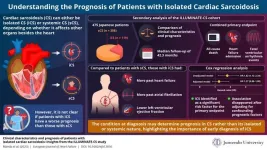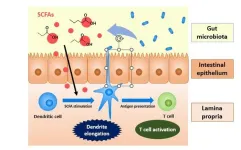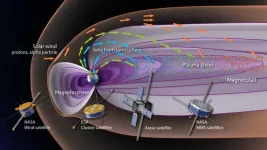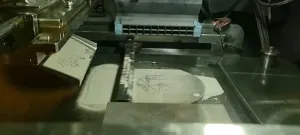Sarcoidosis is a complex inflammatory disease that causes the harmful accumulation of tiny clumps of cells called granulomas in the body. In most cases, sarcoidosis manifests in the lungs and lymph nodes. However, in approximately 10% of patients, the heart is affected; this condition is known as ‘cardiac sarcoidosis (CS).’ Although relatively rare, CS can cause life-threatening complications, including arrhythmia, heart failure, or sudden cardiac death.
One puzzling aspect of CS is that the condition sometimes involves the heart alone, without manifesting clinically apparent symptoms in other organs. This is referred to as isolated CS (iCS), in contrast to the multi-organ condition called systemic CS (sCS). According to previous studies, patients diagnosed with iCS have a poorer prognosis than those with sCS, despite the latter condition involving multiple organs instead of just the heart.
This seemingly paradoxical finding prompted a research team to investigate the issue in greater detail. The researchers, led by Assistant Professor Daichi Maeda of the Department of Cardiovascular Biology and Medicine at the Juntendo University Graduate School of Medicine, Japan recently conducted detailed statistical analyses to explain the above findings. Their study, published in the European Journal of Heart Failure on October 12th, 2023, is co-authored by Yuya Matsue and Tohru Minamino of Juntendo University, among others.
The team obtained the data for this study from the ‘ILLUstration of the Management and prognosIs of JapaNese pATiEnts with Cardiac Sarcoidosis (ILLUMINATE-CS)’ cohort, a large multicenter, retrospective cohort database. They compared the prognosis and selected clinical characteristics from among a total of 475 patients with iCS or sCS. The primary outcome was a combined endpoint including all-cause death, hospitalization for heart failure, and fatal ventricular arrhythmia events.
The analysis revealed that patients with iCS were more likely to have a history of atrial fibrillation or heart failure than those with sCS, as well as a lower ventricular ejection fraction (LVEF) and thus more impaired heart function. According to a Cox proportional hazard analysis using an unadjusted model, patients with iCS were more likely to have a worse prognosis than patients with sCS based on the defined primary outcome. However, this association vanished when the model was adjusted for other confounding factors.
These results have important implications, as Dr. Maeda explains: “Our findings suggest that the conditions at the time of diagnosis determine a patient’s prognosis rather than whether they have iCS or sCS. Therefore, the early detection of iCS is critical, although there are fewer opportunities to suspect the disease before symptoms appear.” He further adds that once a patient exhibits decreased LVEF or experiences cardiac events, the possibility of CS should be investigated so that they can be treated with immunosuppressors. Notably, this study also found that both patients with iCS and sCS responded equally well to steroid treatment.
Overall, this work sheds valuable light on some intriguing aspects of CS and highlights the need for further investigation. “We hope that our current study facilitates the development of an early diagnostic tool for CS and that researchers around the world engage in studies on CS,” concludes Dr. Maeda.
We envision a future where all types of sarcoidosis can be timely diagnosed and managed.
Reference
Authors
Daichi Maedaa, Yuya Matsuea, Taishi Dotarea, Tsutomu Sunayamaa, Takashi Isoa, Kenji Yoshiokab, Takeru Nabetac,d, Yoshihisa Narusee, Takeshi Kitaif, Tatsunori Taniguchig, Hidekazu Tanakah, Takahiro Okumurai, Yuichi Babaj, and Tohru Minaminoa,k
Title of original paper
Clinical characteristics and prognosis of patients with isolated cardiac sarcoidosis: Insights from the ILLUMINATE-CS study
Journal
European Journal of Heart Failure
DOI
10.1002/ejhf.3056
Affiliations
aDepartment of Cardiovascular Biology and Medicine, Juntendo University Graduate School of Medicine
bDepartment of Cardiology, Kameda Medical Center
cDepartment of Cardiovascular Medicine, Kitasato University School of Medicine
dDepartment of Cardiology, Leiden University Medical Center
eDivision of Cardiology, Internal Medicine III, Hamamatsu University School of Medicine
fDepartment of Cardiovascular Medicine, National Cerebral and Cardiovascular Center
gDepartment of Cardiovascular Medicine, Osaka University Graduate School of Medicine
hDivision of Cardiovascular Medicine, Department of Internal Medicine, Kobe University Graduate School of Medicine
iDepartment of Cardiology, Nagoya University Graduate School of Medicine
jDepartment of Cardiology and Geriatrics, Kochi Medical School, Kochi University
kJapan Agency for Medical Research and Development-Core Research for Evolutionary Medical Science and Technology (AMED-CREST), Japan Agency for Medical Research and Development
About Assistant Professor Daichi Maeda
Dr. Daichi Maeda obtained his PhD from Osaka Medical College, Japan, in 2020, where he also served as Assistant Professor for a year. In April 2021, he joined the Department of Cardiovascular Biology and Medicine at Juntendo University, where he currently serves as Assistant Professor. His research focuses on heart failure and cardiomyopathies. He has over 50 publications to his name on these topics. He is also a member of the Japanese Circulation Society and the Japanese Heart Failure Society.
END




